Froonp
Posts: 7995
Joined: 10/21/2003
From: Marseilles, France
Status: offline

|
Here is my try at 3.4.3.
We experienced severe snowfall yesterday (here it is 30 cm), so I could not go to work and had time to think and write about that.
I'm sending this in Word format (nicer to read) directly to Steve. I'll make modifications with the suggestions I might have.
3.4.3 Committing Air Units
Patrice Forno – Version 1.0
Committing Air Units is very important to achieve successes on the battlefields of MWiF. Air Units are assets that give powerful advantages to whom manage at using them in support of his military operations, either on the ground or at sea.
There are 3 concepts that must be understood to help master MWiF's Air Operations :
Concept 1 : Air units only "act" once per game turn.
Concept 2 : Activity Limits makes advance planning mandatory.
Concept 3 : Fighters are everything.
CONCEPT 1 : Air units only "act" once per game turn
Concept 1 is about having a pretty good picture of the arsenal of Air Units that you have available, what air missions they can be used for, and what you want them to do (i.e. have a strategic war plan for this game turn). Reorganization can help you using Air Units multiple times during a game turn, but reorganization is few and expensive.
Who’s who
Air Units that we deal with in this section are the bombers. The fighters will be dealt with later. The bombers are the real Air Units that have an effect in the war, the fighters are only here to allow or deny them to accomplish their mission.
There are 2 broad categories of Air Units :
- Warplanes, those that do the actual fighting & bombing. Fighter-bombers, tactical bombers, strategic bombers, torpedo bombers, dive bombers are all warplanes.
- Transport planes (white circled range), that don't fight (or fight poorly).
Transport planes are very few on the MWiF map, but they have roles that make them unique and irreplaceable.
Warplanes air missions
There are a number of air missions that Air Units can do. Here are the air missions that warplanes can do. In parenthesis is the factor on the counter that is the most useful for this air mission :
- Naval Air Patrol / Naval Air Combat (A2S).
This is using the warplanes as assets to help controlling the seas, either by battle or by dissuasion. Usually the best warplanes for this air mission are the naval bombers (NAV), because they have a bonus for finding the enemy at sea, so it is not very hard to decide which warplanes to use for this air mission.
- Strategic Bombing (Strat).
This is using the warplanes to harm the enemy's military production facilities. Strategic bombing is also a valuable thing to do if only to engage enemy fighters to fight your own fighters, when you are seeking air superiority in a theatre.
- Carpet Bombing (Strat).
- Ground Strike (Tact).
- Ground Support (Tact).
These 3 last air missions are the use of warplanes as assets to help friendly land forces fighting enemy's land forces.
Carpet Bombing can destroy ground units, but needs to have a very large number of bombers (at least 4 air units of heavy bombers, maybe more) to have a smallish 50% chances of success. This represents a high cost for limited results so generally it is only used by the allied side toward the end of the war, and only after their Ground Striking and Ground Supporting needs have been fulfilled.
Ground Strike is the most used air mission as it disrupts (i.e. “softens”) the enemy land units before a land combat is announced. It gives larges bonuses for land combat when the Ground Strike was successful (+2 per disrupted unit with the 2d10 CRT). The rule of thumb we use in my gaming group to have reasonably high chances for achieving disruption is to have about 10 tact points doing the air mission (Example : 2 Stukas with 5 tact factor each which represent 2 x 50% chances at disrupting the enemy, or 5 fighter bombers with 2 factor each which represent 5 x 20% chances at disrupting the enemy, etc…). This is not 100% but it is reasonably high chances. Ground Striking also immobilize the enemy which limits his reaction capacities and is a good way to win land combats on the long term.
Ground Support is also often used, because it is free (don’t count against the activity limits that we will deal with in the next section) and it adds tact factors as combat factors to an actual land combat that is taking place. For each quantity of tact factors that equals the enemy defensive combat factors, you add the same bonus that the Ground Strike would have achieved by disrupting an enemy unit (Example : if the enemy has 15 combat factors in a stack with 2 land units, for each 15 tact factors that you add, you gain a +2 (2d10 CRT) to the land combat. So for 15 tact factors invested you get you a +2 while they would have had a lot of chances to give you a +4 if they had been used in Ground Strike air missions before the land combat was announced, and all enemy units had been disrupted which is not 100% sure even with 15 tact factors). So this is less efficient than Ground Strike, but is used to complete the assault power of your land units when the enemy is strong. Sometimes though Ground Support is more efficient than Ground Strike, this is when the enemy is very weak. For example if the enemy only have 4 combat factors with a single unit, putting 16 tact factors on him in Ground Support will give you a +8 to the land combat, while if you had put these 16 tact factors in Ground Strike missions you would only have achieved at best a +2. Putting 4 tact factors on him gives you the same bonus (+2) that you’d have had if you had Ground Striked him successfully (40% chances of success). As Ground support missions are free (as you will see next), you’d better not Ground Strike weak enemies when you know you have the air power to swamp them under your bombs.
As you can see by looking at the factor on the counter that is the most useful for an air mission, some planes that are good at Strategic Bombing (those with a high Strat factor) can be used for 2 different kinds of air missions (Strategic bombing and Carpet bombing). Moreover, those planes with a high Strat factor can also have a high Tact factor so you will be torn between the desire to use them in one air mission type or the other. So you really need to know how many air units you have, and how many of them you will need for all the air missions that you are planning to give to them for this game turn.
Transport planes air missions
Transport planes are a different cup of tea, and have the following air missions :
- Paradropping land units (range)
- Air transport (# of reorg points, range).
- Air resupply (reorganization) (# of reorg points, range).
This kind of plane will be so few on the map (usually not more than half a dozen across the entire globe, maybe 10 in all), so it is much easier to decide which one will be used for paradrop and which one will be used for air resupply or air transport. But as for warplanes you need to know.
Reorganisation
Reorganisation is what makes your able to have an air unit “act” multiple times in a game turn. This is a very powerful ability, and you should always tend to try to have as much reorganisation power as you can, because it allows you to use your best units many times in a game turn.
Reorganisation power during a game turn can come from 3 sources :
• HQ that have from 1 to 5 reorganisation points.
• ATR Air Unit that have from 1 to 2 reorganisation points (more generally they have 1 point).
• TRS / AMPH and a special kind of SUB (Supply SUB) have 1 reorganisation point.
So beyond the strategic skills described in the previous paragraphs that you need to have, you also need to have the tactical skill to rebase your most valuable air units after they return to base from their air mission, to places where they will be able to be reorganised. That is :
• In range from an HQ, and if you plan to use an HQ to reorganise units, try to gather as many units as this HQ can reorg so that you waste no reorg power.
• In range from an ATR, but you also then need to remember to “save” an Air Mission for that ATR to then fly his reorg mission.
• In a coastal place where TRS / AMPH / Supply SUB at sea will be able to reorg the air unit.
Conclusion
To make the best use from your Air Force, in regards to concept 1, you need to have a precise idea of what you will use each air unit for. You don't need to stick to your initial task repartition too strictly, but you need to have one.
CONCEPT 2 : Activity Limits makes advance planning mandatory
By having studied and mastered concept 1, you now know what Air Units will be used for during the course of the turn, to perform what air missions.
But the mechanics of MWiF are such that you can’t do everything at once. You only have a limited number of air missions during each impulse, so you need to prioritize the air missions that you have to fly, and fly them impulse after impulse, in the best way so the rest of your military operations can be conducted without delay (Note : MWiF is a game against the clock, that is, time is very often your main enemy).
Limits and prioritizing
Some air missions are free, that is they don’t count toward the limited number of air missions that you conduct each impulse. These are :
- Ground Support.
- Fighter escort or fighter interception.
- Air units flying at sea in interception mode.
All the other air missions are limited, but these free air missions can be conducted at will, this is one of the reasons why you will sometimes fly warplanes in Ground Supporting role rather than in the more efficient Ground Strike mode that is limited in number.
A good example of that prioritization is to remember to “save” the right number of air missions to conduct paradrops. If you plan on paradroping 3 air units during this impulse, and you only have 4 air missions allowed, you know that you only have 1 single air mission remaining to fly other air missions. Generally you’ll use it to Ground Strike the enemy land units where the paradroping will occur, but not necessarily, it may also be a simple rebase mission to have a fighter air unit protect the paratroopers after they won their land combat.
Another good example of that prioritization is to remember to “save” the right number of air missions to conduct air rebase missions when your army is advancing, after the land units have moved, so that your Air Units are ready next impulse to strike the withdrawing enemy, or to cover your advanced forces. Knowing to “save” air missions for rebase air missions that will become critical air missions during the next impulses are one of the most advanced game skills that you may have, and one of the pitfall the rookie players fall into most often.
Action Choices
A second aspect of that limitation is the Action Choice. There are 4 types of actions that you can use during each impulse. In decreasing order of air missions availability they are : Air action, Combined action, Land action or Naval action. Depending on the Major power you run, you may have more air mission during a land action than during a naval action, or the reverse. For example, Germany is a land power and has more air missions during land actions, while the CW is a naval power and has more air missions during naval actions.
- Air action have unlimited number of air missions, but no land nor naval move.
- Combined action have a large number of air missions (from 3 to 7, China excepted), some land moves (2-6) and few naval move (1-3). It is a bit of everything.
- Land action has some air missions (from 1 to 4), unlimited land moves and no naval move.
- Naval action has some air missions (from 1 to 3), no land move and unlimited naval moves.
Action choice also has an impact on reorganization. Reorganization is cheaper for air units if you choose an air action, otherwise it is twice the normal cost.
So you need to think about your action choices wisely and have a vague idea of the types of actions that you will need during the whole turn, and schedule them for the better result, taking into account the weather and the weather forecast.
For example if you want to conduct a large scale summer offensive, it might be a good idea to start a summer (good weather) game turn by an air action, so that you can use your air force widely and without restrictions, so that the enemy is softened for future impulses. It might look like a wasted impulse because there will be no land action nor land attack, but it may pay off during next impulse, providing you’ve restricted the enemy’s reorganization capacity so that he does not nullify your results. On the plus side, an air action let you reorganize using your full reorganization capacity, where another type of action let you only use half that capacity by doubling the cost of the reorganizing.
Statistics about numbers of impulses
(Maybe these would fit better in part 3.4.2)
Here are my own statistics, accumulated over 8 completed 39-45 games. This is 48 J/F game turns, 48 M/A game turns, and so on.
Average number of impulse per side, per game turn :
J/F : 2,5 impulses per side per turn
M/A : 2,9 impulses per side per turn
M/J : 4,2 impulses per side per turn
J/A : 4,7 impulses per side per turn
S/O : 3,5 impulses per side per turn
N/D : 2,9 impulses per side per turn
For an average of 125-126 impulse per side per whole 39-45 game (which make it a global average of 3,5 impulses per side per turn over the course of the 36 turns of the whole 39-45 game).
Maximum observed number of impulse for a side during a game turn :
J/F : 4 impulses for a side
M/A : 4-5 impulses for a side
M/J : 6-7 impulses for a side
J/A : 7-8 impulses for a side
S/O : 5 impulses for a side
N/D : 2 impulses for a side
Minimum observed number of impulse for a side during a game turn :
J/F : 1 impulse for a side
M/A : 1 impulse for a side
M/J : 1-2 impulses for a side
J/A : 2-3 impulses for a side
S/O : 1-2 impulses for a side
N/D : 1 impulse for a side
To sum up, a J/A game turn will have an average of 4,7 impulses (say 5 for the side that plays first, and 4 for the other side), and have a maximum of 8 impulses, and a minimum of 2 impulses.
Let’s be clear that :
• The minimum and maximum are sometimes one time occurrences over the whole 8 games.
• The minimum observed number of impulse is for the side that moved last. The other side will have experienced an extra impulse generally.
• The maximum observed number of impulse is for the side that moved first. The other side will have experienced an impulse less generally.
Statistic about the expected number of impulse per game turn
Some other statistic that I had from another source, obtained after simulating 100,000 years of WiF game turns :
Probability of turn ending after impulse J/F M/A M/J J/A S/O N/D
3 5,60% 2,50% 0,10% 2,60%
4 23,40% 11,80% <0,1% <0,1% 3,70% 12,70%
5 32,80% 24,90% 3,50% 0,50% 13,40% 24,50%
6 24,30% 27,10% 7,80% 0,80% 20,60% 25,10%
7 9,90% 18,80% 16,50% 10,80% 22,60% 18,10%
8 3,00% 9,90% 20,90% 18,30% 18,50% 10,30%
9 0,70% 3,50% 20,00% 21,10% 11,70% 4,50%
10 0,20% 1,20% 15,10% 19,70% 5,80% 1,60%
11 <0,1% 0,30% 9,30% 14,60% 2,50% 0,50%
12 <0,1% <0,1% 4,70% 8,50% 0,90% 0,10%
13 1,50% 3,90% 0,20% <0,1%
14 0,50% 1,40% <0,1%
15 <0,1% 0,30%
16+ <0,1%
Expected # of impulses: 5,2 6,0 8,7 9,5 7,2 6,0
Probability of odd number of impulses 49,10% 50,10% 50,90% 51,20% 50,50% 50,20%
Probability of even number of impulses 50,90% 49,90% 49,10% 48,80% 49,50% 49,80%
Conclusion
All in all, concept 2 is all about planning, tradeoffs and prioritizing.
CONCEPT 3 : “Fighters are everything”
By having studied and mastered concept 1 and concept 2, you now know what Air Units will be used for during the course of the turn, to do which air missions, and also what kind of impulses you will call to be able to conduct and orchestrate all those air missions in good order for the better military overall result.
Concept 3 is about allowing those air missions to be done, and denying the enemy the ability of accomplishing his own air missions :
• Your fighters prevent enemy Air Units to complete the air missions that the enemy has assigned to them.
• Your fighters help your Air Units to complete the air missions that you have assigned to them, when the enemy have fighters.
Moreover, please note that there are some fighters that also have the capability of being assigned normal warplanes’ air missions (fighter-bombers), so they are even more important because of that. If you have enough fighters to cover all your normal fighter needs, you will be able to spare the best fighter-bombers for regular Air Units air missions described in concept 1.
So fighters are everything, because you won’t be able to use your Air Force without fighters, and you won’t be able to use your army without denying the enemy the chance to use his Air Force.
Air superiority
The perfect accomplishment of concept 3 is to achieve total air superiority. This is when you can consistently accomplish all your Air Units air missions while your enemy can’t accomplish his. This happens very rarely in MWiF, sometimes at some early stages of the War in Russia, and sometimes in the late stages of the War in the West. You can however achieve local air superiority in area 10 hexes across or even smaller more often.
Obtaining air superiority can be done by simply much building more fighters than the enemy, which means that you have geared up your production to achieve that goal (see 3.4.10), but this is also obtained by using your fighters wisely on the field.
Elements that contribute to achieving air superiority, other than sheer mass production, are the following.
Choose your fights
You need to assess your own need to have your air missions succeeding, while assessing the need you have to prevent the enemy's air missions. While making these assessments, you need to rank the threats, from the one that will harm you the less to the one that would harm you the worst, and preferably reserve your fighter activity to prevent the latter if you can’t prevent both.
Also, take into consideration that Strategic Bombings, and Carpet Bombings are more efficient if they are not intercepted (+1 on a 1d10 result), so you might intercept it just for the sake of denying the +1.
When you are the phasing side, remember that you have 2 chances of sending fighters in combat. You can send them as escorts before the enemy intercepts you, and after your enemy has intercepted you, you have the chance of sending intercepting fighters. So when sending your escorts, be wise and only send those fighters that could not reach the target hex in interception. You’ll send them in interception if the enemy comes, and you’ll be able to choose the air-to-air combat value by adjusting the number of fighters you send. For example, when playing the western allies in the late war, and I am nearing total air superiority, I always arrange so that all the fights are at least +2 for me by sending extra intercepting fighters, taking advantage of the enormous range of the late war western allies fighters.
Also, with the knowledge of how many impulses on the average you will have to fight each turn, you can also calculate how many fighters you can use each impulse so that you have no lack of fighters in the latter impulses. For example, knowing that the J/A game turns has an average duration of about 9 impulses (but can also last 15-16 impulses), if you have 27 fighters on a theatre you know that using more than 3 per turn can lead to lack of fighters later, unless you have reorganization possibilities. But you must also take into account your enemy’s use of his fighters and his reorganization capabilities. If he also have 27 fighters, and is using 9 of them during the first impulse, then you can use as much to counter the threat, but be prepared to muster reorg power, or planes from other theatre in case air activity doesn’t lower on this theatre. Also be wary of his own reorg power. If he has a large reorg power, and you don’t, you’d be advised to spare fighters to have some left for the latter impulses, else you will find yourself in a temporary, but unpleasant, state of temporary air inferiority.
Only send what you need
You don't necessarily need to send a lot of fighters to prevent or harm enemy air missions.
Look at the Air-to-air tables, looks at statistics below, and have your own conclusions.
For example, being at +1 or 0 is the same regarding your odds to harm the enemy. These odds are of 56%. Being at +1 you kill more often, but if being at 0 can spare you some planes to fight later, this can be a good deal. On the other hand, at 0 you have much more “clear through” results that you won’t like.
Also, being at -1 or 0 is the same regarding your chances to let the enemy clear through to his target. So if you’re short of fighters and defending against enemy air missions, you may fight today at -1 rather than 0, and spare an extra fighter to fight better tomorrow, because not clearing them through is what you want and not necessarily destroy them all.
Learn to abort
As the air-to-air combat is engaged and progresses and both sides are loosing fighters, be ready to abort the fight if you come to fight at extreme disadvantages. Fighting under -3 is the beginning of what can become a total disaster. Maybe letting that air mission clear through is a lesser harm than loosing more fighters ?
Reorganisation
Reorganisation was talked about during the explanations about concept 1, where you were reorganizing your Air Units to use them again in a latter impulse. It is even wiser to reorganize your best fighters, if they survived, because fighters are the cheaper air units to reorganize (you reorganize 2 fighters for the same reorg price as 1 multi engined bomber), and “fighters are everything”. It all depends on what you need, or on what you’re short.
Choose your nest wisely
Fighters generally have a shorter range than bombers, so you need to think about that when basing them around. Also, remember that they have an interception range that is half their printed range and arrange yourself so they are at interception range of the places where you’d want them to fight the enemy. Also, never forget to have that place in supply.
When you are defending against raids that go deep into your land (and playing with the En-route interception option), try to have your fighters as a curtain through which the enemy will have to pass to reach his target. Don’t forget to fill in he holes that the enemy will open in your curtain by making air missions that you intercept. He will use those holes in subsequent impulses.
When you are on the offensive, don’t hesitate to base your short ranged fighters directly on the frontlines (this is also true for very short ranged bombers, such as the Stukas), but be careful to avoid places that are threatened of being Ground Struck by nearby enemy ART and avoid them. When you are on the defensive, you’d rather base your fighters as far as possible from the frontlines to have room in case of an enemy advance, but still in interception range. Unavoidably, some of your fighters will be on the frontlines, but arrange yourself so that they are the worst ones in case you must retreat and your planes are overran.
Also be careful about the “all eggs in the same basket” effect, and avoid choosing as a base an hex that is too much valuable to Ground Strike for the enemy (for other reasons, such as having lots of armor, or an HQ, or else), because if it is Ground Struck, either you’ll have to have your fighters take-off to intercept (even if you would have liked to spare them for future impulses), either you run the risk of seeing them disrupted by the raid. I do that especially when the dreaded Me262 is on the field. I Ground Strike its base, and either it flies and fight me and I abort after the first round of air-to-air combat, either I have a shot at disrupting it.
When planning naval offensive in an enemy sea area, you generally first need to conquer air bases (islands, if possible with a port) in that sea area’s vicinity to base the fighters that will protect your fleet later. You will need to plan this all a few turns in advance, and possibly be obliged to conduct a few preparation invasions.
Statistics about air-to-air combat
(These were from Carl-Niclas Odenbring on 10 January 2008)
Air-to-Air Combat Value
-9 -7,8 -5,6 -3,4 -2 -1 0 +1 +2,3 +4,5 +6,7 +8
Positive results for the Roller
Enemy Down 2% 6% 9% 12% 16% 20% 25% 30% 36% 42% 49% 56%
Enemy Abort 10% 14% 21% 24% 26% 29% 31% 26% 28% 30% 33% 25%
Total 12% 20% 30% 36% 42% 49% 56% 56% 64% 72% 82% 81%
Negative results for the Roller
No result 8% 10% 12% 13% 14% 15% 8% 16% 8% 9% 9% 9%
Enemy Clear 80% 70% 58% 51% 44% 36% 36% 28% 28% 19% 19% 10%
Total 88% 80% 70% 64% 58% 51% 44% 44% 36% 28% 28% 19%
|
 Printable Version
Printable Version
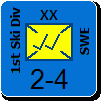





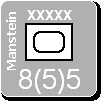


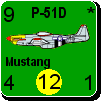
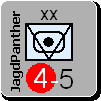
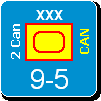
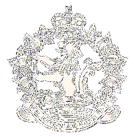
 New Messages
New Messages No New Messages
No New Messages Hot Topic w/ New Messages
Hot Topic w/ New Messages Hot Topic w/o New Messages
Hot Topic w/o New Messages Locked w/ New Messages
Locked w/ New Messages Locked w/o New Messages
Locked w/o New Messages Post New Thread
Post New Thread